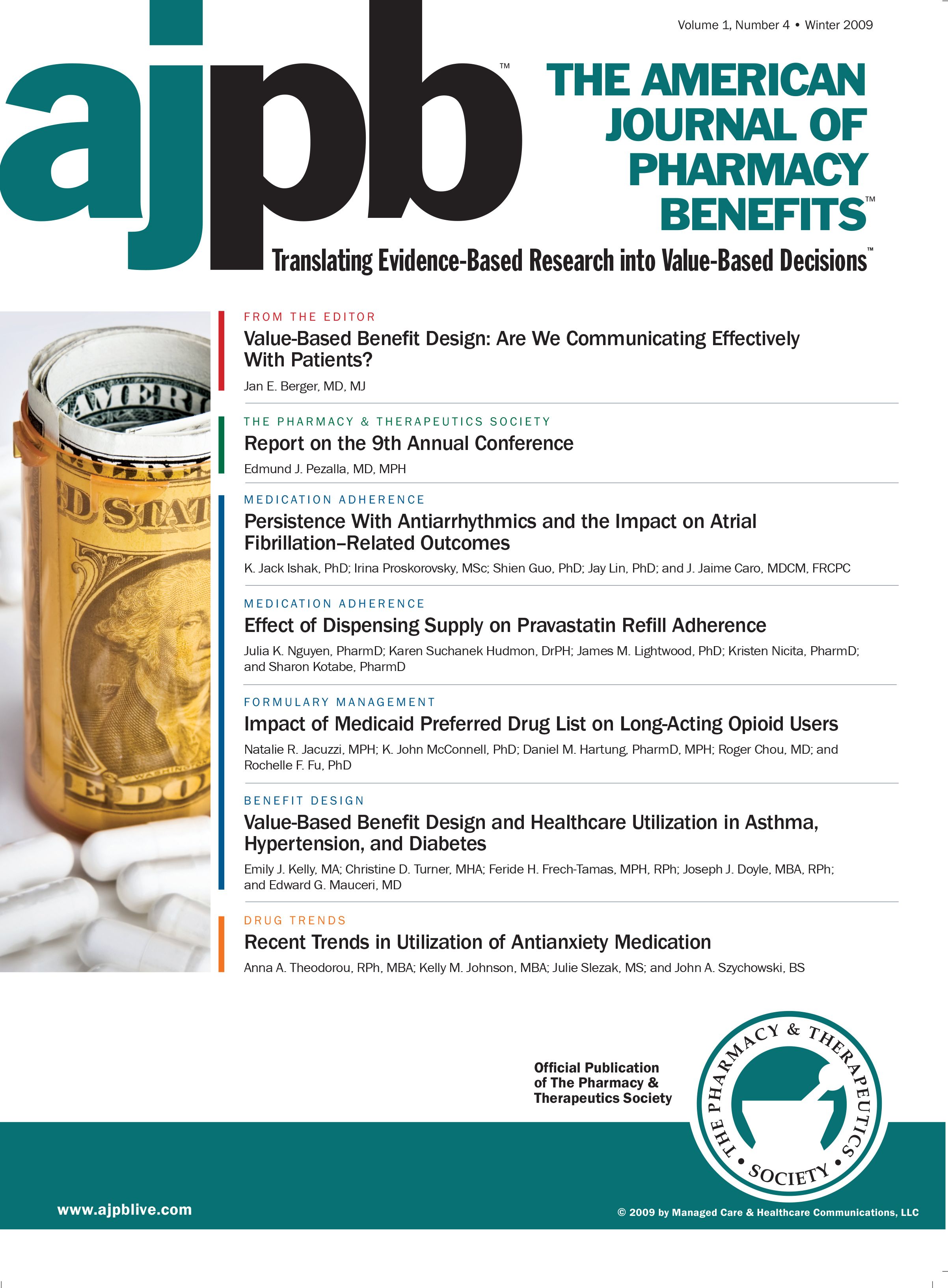Publication
Article
AJPB® Translating Evidence-Based Research Into Value-Based Decisions®
From the Bench to the Bedside: Translational Research
Author(s):
A new National Institutes of Health office to study translational research would help bridge the gap between basic discoveries and treatments and therapies.
A primary focus of many patient advocacy organizations is to support policies that ensure that new treatments are continually developed. The hope is that each innovation will improve health and bring patients a step closer to prevention, early diagnosis, and cure.
To the patient community, research is like a team sport. There is the original investigator. There are the financial backers, including the federal government. There are reviewers. There are people involved in clinical trials. There are definitely attorneys. There is private industry. All are part of the team, and each has an important role to play. But without a coach—some entity—to bring everyone together, the research ball doesn’t get passed. The ball is grounded, intentionally or not, and the play clock stops.
Applying this analogy to the research process, we have observed over the years that there are fewer and fewer instances of a handoff between those in the laboratory and those who seek to apply new discoveries in the clinical setting. An article in Nature magazine last year pointed out that in the past 30 years or so, the ecosystems of basic and clinical research have diverged. The pharmaceutical industry, which for many years was expected to carry discoveries across the divide, is now hard-pressed to do so.1
Billions of dollars are spent on research that doesn’t see the light of day. This research, never translated into new treatments and cures, is left to languish without further exploration or application. There is a paucity of action to move research from the laboratory bench to the patient’s bedside.
Commonly labeled the “valley of death,” this abyss between the work of basic scientists and clinicians is growing. And the impact on patients—particularly those with chronic conditions—is immense.
People with chronic diseases and disabilities seek answers that will provide a chance for a more normal life, a chance to live longer and feel better. They desperately want answers that are useful for decision making in real-world settings. Those with conditions like amyotrophic lateral sclerosis, Alzheimer’s disease, lupus, or Parkinson’s disease face the fact that there isn’t even a realistic treatment option today.
For this reason, the National Health Council believes the National Institutes of Health (NIH) should seriously consider ways to help translate basic discoveries into treatments and therapies.
The Parkinson’s Action Network, which is a member of the National Health Council, is spearheading efforts to address this issue. The patients they serve face a life with no present cures and limited care options. The Parkinson’s Action Network acknowledges that NIH has made significant progress, within its existing structures and with limited funding, toward promoting translational research. But more progress could be made using new systems that uniquely support this vastly different and hugely important research.
When the gap between the work of basic scientists and the work of clinical researchers is bridged, avenues of research will open up. Translational research will flourish, bringing better treatments and cures for many diseases to those who so desperately need them. To maximize the nation’s investment in basic research, as the Parkinson’s Action Network points out, better mechanisms are needed to quickly translate research into clinical practice.
We believe an office dedicated to science and regulatory activity should look at translational research. The entity would be created within the office of the NIH director and provide resources and technical assistance to the institutes and NIH-funded researchers. In addition, it would ensure that promising new research is fully explored in a timely and efficient manner and, where appropriate, developed and commercialized by industry.
An NIH office that addresses translational research could significantly impact the more than 133 million people with chronic diseases. Such an office would meet one recommendation that was identified back in 2003 by the Committee on the Organizational Structure of NIH; it would enhance the director’s role in conducting NIH-wide lanning for trans-NIH initiatives and cover a broad number of disease categories, rather than looking at a specific condition.2
Structured correctly, this office also would increase the pipeline of new drugs and new treatment options that patients so desperately seek. It would provide technical assistance to researchers and develop appropriate processes for translational research grants. It also would enhance the credibility of NIH-funded projects by increasing real-world application of cutting-edge science. As a result, clinical research would be more visible, more viable, and more ready for the handoff to industry.
Finally, this proposal underscores the unique role of government in filling a void that private industry cannot fill on its own. The new NIH office could serve as a coordinating bridge between basic and clinical research.
I frequently quote the Institute of Medicine’s statement on value in healthcare: “getting the right care at the right time to the right patient for the right price.” What the National Health Council and the Parkinson’s Action Network are proposing is a way to advance the development of new medicines and treatments that will have an immense impact at the point of care.
The details of this proposal are still being developed, and we welcome all feedback. We and the patients we serve are committed to finding ways to promote translational research. Adhering to the status quo will not get us where our healthcare system should be.







